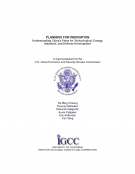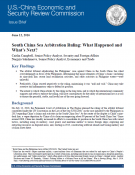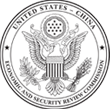×
Filter Results
Filter Results

Staff Paper
A U.S.-China Bilateral Investment Treaty (BIT) is unique among other existing BITs insofar as it will have to balance the interests of two world powers that are both capital-importing and capital-exporting nations. It will not only determine future investment relations between the world’s two biggest economies, but will also set the precedent for U.S. investment relations with other major developing countries. While a U.S.-China BIT could potentially unlock sizable benefits, a number of significant challenges—many of which are unique to China’s involvement—complicate the debates around a prospective U.S.-China BIT. This report briefly summarizes each country’s history with BITs, identifies potential challenges in moving forward with negotiations, and highlights potential implications of the U.S.-China BIT for the United States. Drawing on the 2012 U.S. Model BIT, the evolution of China’s BIT practice, and China’s 2012 BIT with Canada, this report concludes by discussing a number of questions U.S. policymakers should consider.

Contracted Research
The report provides an assessment of China’s state plans for civilian and defense-related science and technology, industrial, and energy development and their economic and security implications for the United States. The authors are Tai Ming Cheung, Thomas Mahnken, Deborah Seligsohn, Kevin Pollpeter, Eric Anderson, and Fan Yang, writing for the University of California Institute on Global Conflict and Cooperation.

Staff Paper
Chinese tourism to the United States has expanded rapidly over the past ten years. From 2005 to 2015, Chinese tourism spending in the United States has increased eight-fold, and in 2015 contributed $27 billion to the U.S. economy. Today, tourism constitutes a significant part of the United States’ exports to China, making up 57 percent of U.S. service exports to China in 2015 and 12 percent of U.S. exports to China overall. This increase has been driven by rising Chinese incomes which have made China the largest source of international tourists in the world. While many Chinese travel to the United States for traditional tourism, an increasing number of Chinese students travel to the United States for secondary and tertiary education, with China now contributing more students to the United States than any other country. As Chinese tourism has increased, Chinese investment in U.S. hotels and hospitality facilities has grown by a factor of 9 from 2013 to 2015 following looser Chinese rules on outbound investment. This paper examines the rise in Chinese tourism to the United States and Chinese investment in the U.S. hospitality sector and the consequences of these trends for the United States.

Staff Paper
Over the last 15 years, Mexican drug organizations have replaced domestic producers as the main manufacturers and distributors of meth in the United States. While Mexican cartels produce the majority (around 90 percent) of meth used in the United States, around 80 percent of precursor chemicals used in Mexican meth come from China. Precursor chemicals are increasingly being shipped from China to Mexico and Central America, where they are manufactured into meth, transported across the southern border of the United States, and brought into southwestern states—Texas, Arizona, and California—before being shipped across the country. Despite international counternarcotic efforts, meth precursor manufacturers in China continue to thrive because the country’s vast chemical and pharmaceutical industries are weakly regulated and poorly monitored. This report examines the extent of China’s illicit chemical production and the effectiveness of U.S. and international efforts to reduce precursor chemical flows.

Issue Brief
On July 12, 2016, the arbitral tribunal adjudicating the Philippines’ case against China in the South China Sea ruled overwhelmingly in favor of the Philippines, determining that major elements of China’s claim—including its nine-dash line, recent land reclamation activities, and other activities in Philippine waters—were unlawful. Predictably, China reacted negatively to the ruling, maintaining it was “null and void.” China may take assertive and inflammatory steps to defend its position. The extent to which China abides by the ruling in the long term, and to which the international community supports and seeks to enforce the ruling, will have consequences for the utility of international law as a tool to ensure the peaceful, stable, and lawful use of the seas going forward.
